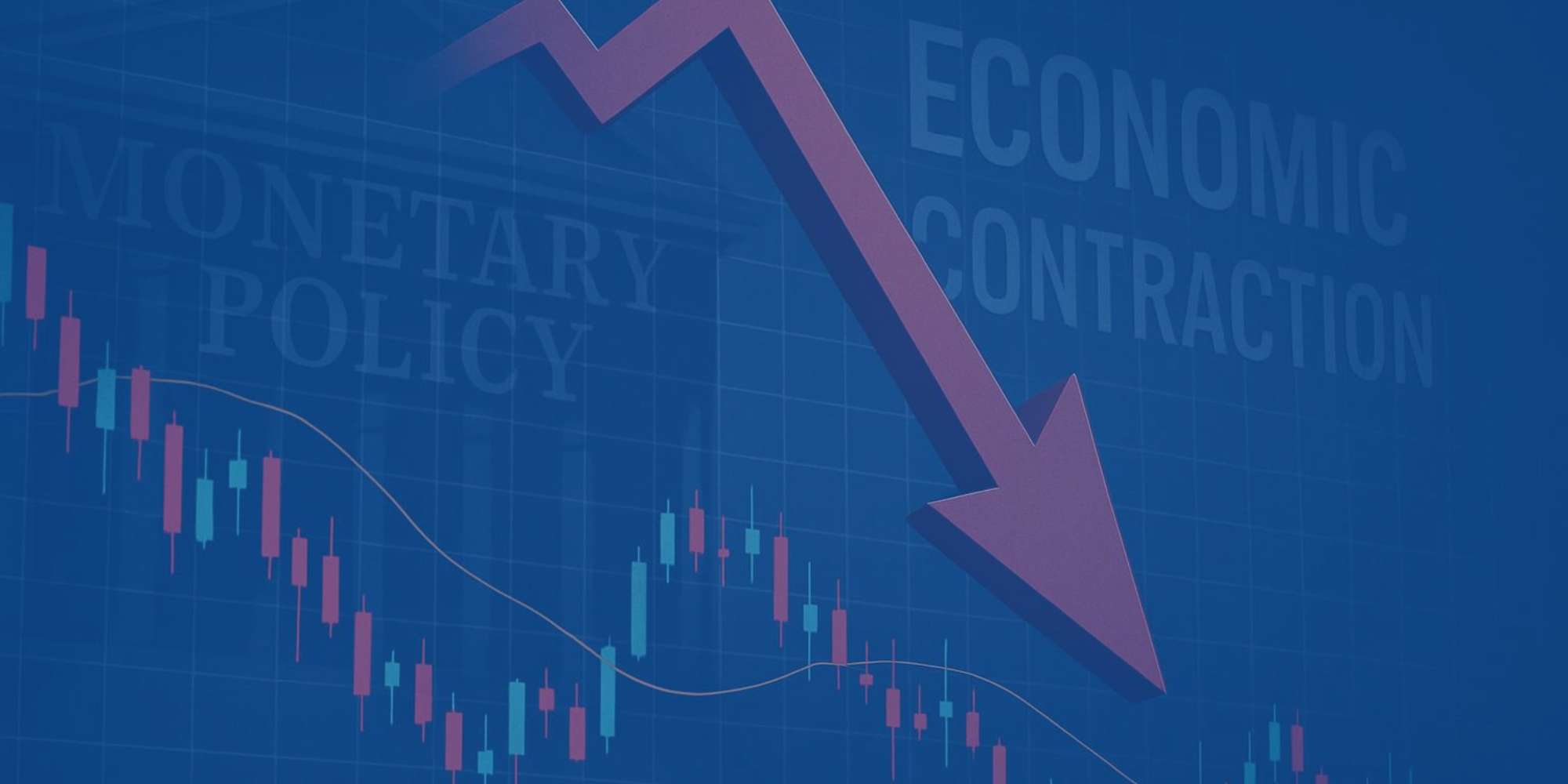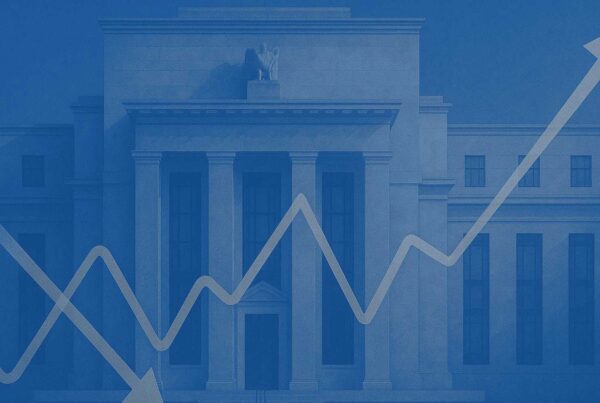Financial markets closed on Friday, June 27th, in a risk-on mood after senior officials from the US and China confirmed a trade framework on Thursday night that solidifies recent negotiations in London and Geneva. The selling pressure in the Treasury market had been only modest so far, pushing yields up a few basis points from Thursday’s lows. However, the short-term trend of the 10-year Treasury Note yield was downward. The yields of all Treasury maturities along the yield curve, except for the overnight yield governed by the Fed, were moving lower. Bond investors were giving the Fed a green light to lower rates, perhaps as soon as July.
On Thursday, July 3rd, US financial markets closed early at 1:00 pm in New York, in anticipation of Independence Day, a national holiday. On the same day, the Labor Department reported that 147,000 jobs were added in June, resulting in a decrease in the unemployment rate to 4.1% from 4.2% the previous month. Most economists had expected an increase of 110,000 jobs. Treasury yields rose as investors anticipated that the strong labor market would prevent the Fed from lowering rates in July. This was the opposite of what happened the week before. However, this was a short week, and Thursday’s session was brief, with few participants. I’m curious to see how bond investors will react next week.
The stock market is reaching all-time highs. Over the last couple of months, the US has shown its economic dominance by getting its trading partners to align with it. Recently, the country has also demonstrated its technological and military superiority, shifting the global order not just in trade but also as a superpower. Additionally, it has acted as a peacemaker, maintaining the dignity of the Iranian people by offering support through global commerce. These are all positive signs for the international financial markets. The message is clear: there won’t be long-term wars, but misbehavior will be strongly punished to maintain peace.
The US effort as a peacemaker reminds me of a real-life story. I attended an all-boys high school where the Headmaster, a gentleman in his mid-sixties with a dry sense of humor and no children of his own, was extremely just and fair. He kept two pairs of boxing gloves in his office. When a fight between two students was unavoidable, instead of ignoring it and letting it happen somewhere unseen and unsupervised, he brought both students into their classroom, moved the desks to make space for the fight, and had classmates serve as spectators. Though it felt longer at the time, most fights lasted no more than a few minutes, and sometimes several hard punches were exchanged with boxing gloves. Nevertheless, no one was ever hurt because the Headmaster acted as the referee, keeping both fighters in line, fair, and balanced. The most interesting part was that after a gentleman’s fight, the two students involved typically never fought again. In my memory, most of them became friends, perhaps like the US and England, or the US and Japan, more recently.
I don’t know if Israel and Iran will face the same fate, but I’m pretty sure that if another encounter happens, the price of oil won’t be affected. All Arab countries in the region have committed to increasing oil production, making substantial capital investments in the US economy, and they won’t provide military support for the Iranian regime. I also doubt it will ever be allowed to close the Strait of Hormuz.
The stock market sold off on Friday, August 1st, with the S&P 500 dropping 1.6% and the Nasdaq 100 falling 1.96%. If you watched financial media outlets during the day, this is pretty much what they were reporting: “The stock market fell sharply on Friday, August 1st, 2025, triggered by a double shock, disappointing economic data, and new tariffs announced by President Trump.”
Bond investors responded positively to the disappointing economic data (lower-than-expected new job creation), and neglected the idea that tariffs could lead to inflation. The yield curve, from short to long maturities, moved lower, signaling that the Fed might be open to a rate cut in September. This is good news for the stock and bond markets because prices of both assets are likely to rise as a result. Bond investors don’t appear concerned about tariffs and inflation. Needless to say, stock investors reacted negatively to the disappointing economic data and the tariff announcement.
If we step back and detach ourselves from the daily news and noise, here’s what I observe:
Inflation has been trending downward. Here’s how the data supports my view:
- Core PCE, the Fed’s preferred gauge, peaked above 4% in mid-2023 and has steadily declined to 2.8% in July 2025.
- Headline CPI has cooled from over 6% in early 2023 to 2.72%, with monthly increases moderating.
- Core PPI is now at 2.6% YoY, and was flat month-over-month, which suggests producer-level inflation is not accelerating.
So, the broader inflation trend is downward, and the July data doesn’t scream “runaway inflation.”
Tariffs: Are They Inflationary or Not?
Here’s where nuance matters. Tariffs could be inflationary, but their impact depends on:
- Scope and timing: If tariffs hit sectors with inelastic demand (like autos or electronics), prices may rise temporarily.
- Pass-through effects: Companies may absorb costs or shift supply chains, muting consumer price impact.
- Consumer behavior: If demand weakens, companies may cut margins rather than raise prices.
So, while tariffs might cause temporary price increases, they don’t necessarily reverse the overall disinflation trend. Blaming tariffs for “higher inflation” oversimplifies a complicated situation.
For a More Balanced Perspective, let’s reframe the narrative:
- Inflation is cooling, but not yet at the Fed’s target.
- Tariffs may cause sector-specific price pressures, but they’re unlikely to reignite broad inflation unless demand sharply rebounds.
- The Fed is watching both labor market weakness and residual inflation, which creates internal tension while trying to establish monetary policy.
- So far, from Liberation Day in April (the official announcement of tariffs) to now, there is no evidence of runaway inflation. We may experience a slight reacceleration of short-term inflation. However, this is far from a train wreck of inflation.
I still believe that bond investors are much more thoughtful than stock investors. And this is why: amongst other variables, the only way bond investors can profit is if they accurately assess economic growth, inflation, interest rates, and Fed monetary policy. Stock investors tend to be more passionate. Therefore, in my humble opinion, they are not as rational as bond investors. Thus, bond investors reacted positively to last week’s news while stock investors reacted negatively.
What was the real reason for the Friday selloff? The answer has three components, not necessarily in order of importance: Seasonality, Implied Volatility, and a Bearish Engulfing Candle.
1. Seasonality: history shows that from mid-August to the end of September, the stock market drops about 50% of the time. August and September are the worst performers of the year for the S&P 500 Index. Maybe this year, the selloff started a bit earlier because of the following two factors.
2. Implied Volatility (IV): 30-day implied volatility is a forward-looking estimate of how much investors expect an asset (like the S&P 500) to fluctuate over the next 30 calendar days, based on the prices of its options. It’s not about direction (up or down)—it’s about magnitude.
Applied to the VIX (S&P 500 Volatility Index) and the VXN (Nasdaq 100 Volatility Index), both are well-known gauges of 30-day implied volatility for the two stock indices.
High IV = Fear and uncertainty = more expensive options due to a greater expected movement
Low IV = Complacency and stability = less costly options due to a stable market
From a risk management perspective, the above helps investors to properly size positions and hedge (or not) their portfolios. They might buy options when IV is low, expecting a spike in the future, or sell options when IV is high, anticipating it to decline.
30-Day IV vs. Realized Volatility:
- 30-Day IV: Projects future volatility.
- Realized Volatility: Measures actual past price movement.
- If IV is much higher than realized volatility, it trades at a premium, and options may be overpriced and vice versa.
At the start of the week, on Monday, July 28th, implied volatility (IV) for the S&P 500 and the Nasdaq 100 was trading at a significant premium. High IV indicates fear and uncertainty. If you are fully invested, you should not buy here; you should sell some to reduce risk. As a result, a selloff was likely underway. This was the second primary reason for the Friday selloff.
3. The S&P 500 formed a Bearish Engulfing Candle on its weekly chart this past week, which can be seen on the daily chart, too. This pattern typically signals a potential reversal or weakness in the current uptrend, especially when it appears after a sustained rally like the one we’ve been experiencing since April.
A Bearish Engulfing Candle features a large red candle that completely covers the previous green or positive candle’s body. This candle represents the price activity for the day or week. When this happens, it signals a shift in momentum from buyers to sellers, often serving as a warning of a potential downturn. Considering the S&P 500 has been on a strong three-month rally, this bearish signal could be especially significant—particularly as we approach August and September, which are historically the most bearish months of the year.
Conclusion: Our quantitative analysis shows that the “Main Trend” of the S&P 500 Index remains bullish. As long as this trend continues—and I believe it will—any pullback or correction is an opportunity to add to our positions in portfolios. However, in the meantime, stock market volatility is increasing, and short-term trading and investing become more difficult. I have consistently mentioned in previous articles that we should expect increased volatility in the second half of the year. It seems that this is the beginning.





